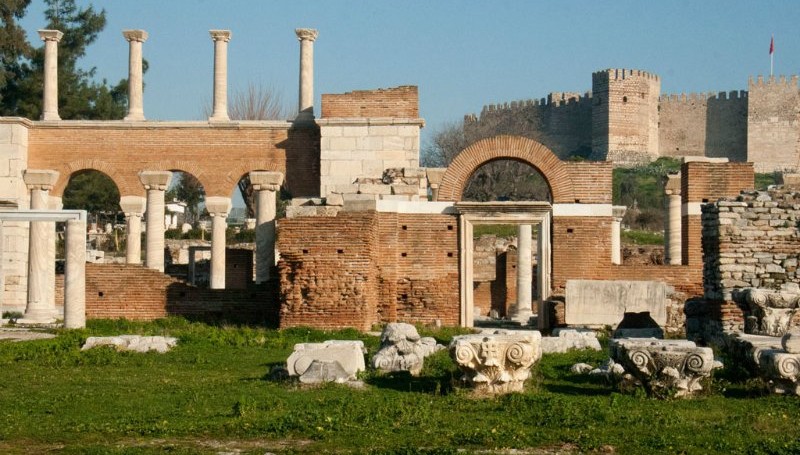Базилика Святого Иоанна - Эфес
When he was being crucified, Jesus asked St. John to take care of his mother, the Virgin Mary. In keeping with his promise, John, also sometimes referred to as John the Apostle, John the Evangelist and John of Patmos, escorted her to Ephesus where she spent the rest of her days. Her house is still to be seen just a few kilometers away from the main city ruins.
St. John was exiled for his preaching by the Emperor Domitian to Patmos, where he wrote the Book of Revelation. He was later allowed to return to Ephesus where he wrote his gospel. He lived to be 100, the only one of Christ’s disciples to die of old age and, in accordance with his wishes, was buried on Ayasoluk Hill, just below the summit where Selcuk castle was later constructed, about 3 km away from Ephesus. His grave is within sight of the Temple of Artemis, one of the Wonders of the Ancient World, where he once preached.
The present-day ruins of St. John’s Basilica, which was destroyed by an earthquake in the 15th Century, are of the third church to be built to mark his grave. The first was a small church which was later replaced by a larger, wooden-roofed basilica. This was in turn replaced in the 6th Century by Emperor Justinian, who also had the Hagia Sofia built in Istanbul.
The basilica was shaped like a Byzantine cross and surmounted by six great domes; the main dome, supported by four pillars, was directly above the tomb. Pillars in the courtyard bear the monograms of Emperor Justinian and his wife, Theodora. The stone and brick construction technique used was extremely rare in its day. The keyhole-shaped baptistery in the north of the nave was built in the 5th Century. The floors and the insides of the domes were decorated with mosaics and the pillars were clad in marble of many different colours. 10th Century frescoes depicting Jesus with St John and another saint are still visible. Fortified walls were added around the church in the 7th and 8th Centuries for protection against Arab raiders. The basilica had three main entrances and was overlooked by 20 towers.
It was believed that dust which emanated from a hole in the marble covered had miraculous healing powers and this attracted pilgrims from afar even as late as the Middle Ages, making the church one of the most visited in Christendom.

